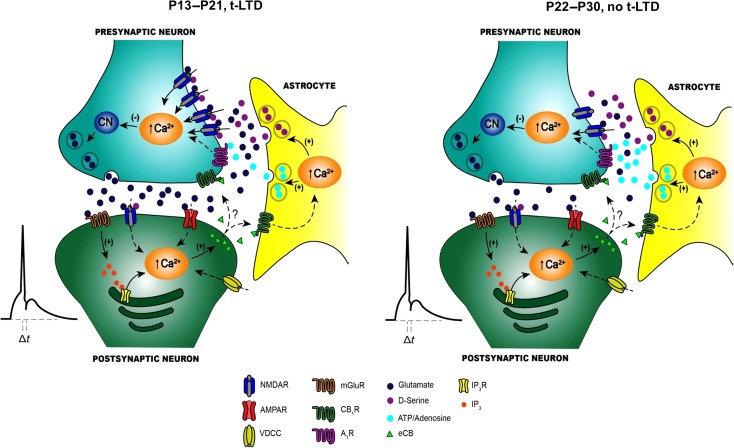Figure 9.
Scheme of the differences in signaling between early (P13–P21) and late (P22–P30) stages of development. (A) At P13–P21, t-LTD is induced by a post–pre single-spike pairing protocol. Postsynaptic action potentials activate voltage-dependent Ca2+ channels (VDCCs) and the presynaptically released glutamate activates postsynaptic mGlu5 receptors. These receptors synergistically activate PLC and produce IP3, provoking Ca2+ release from internal stores and DAG production, which serves as a precursor for endocannabinoid (eCB) synthesis. The eCB signal activates CB1 receptors, facilitating d-serine release from astrocytes. Together with the glutamate released from presynaptic neurons, this d-serine activates presynaptic NMDARs on Schaffer Collateral boutons. This leads to an increase in presynaptic Ca2+, calcineurin activation and synaptic depression. (B) At P22–P30, t-LTD does not develop and the main differences at these synapses at the 2 stages of development are: a change in the probability of glutamate release (higher at P13–P21 than at P22–P30), the tonic activation of pre-NMDARs at P13–P21 but not at P22–P30, a decrease in the number of pre-NMDARs at P22–P30, and an increase in adenosine release from astrocytes at P22–P30 compared with P13–21.

